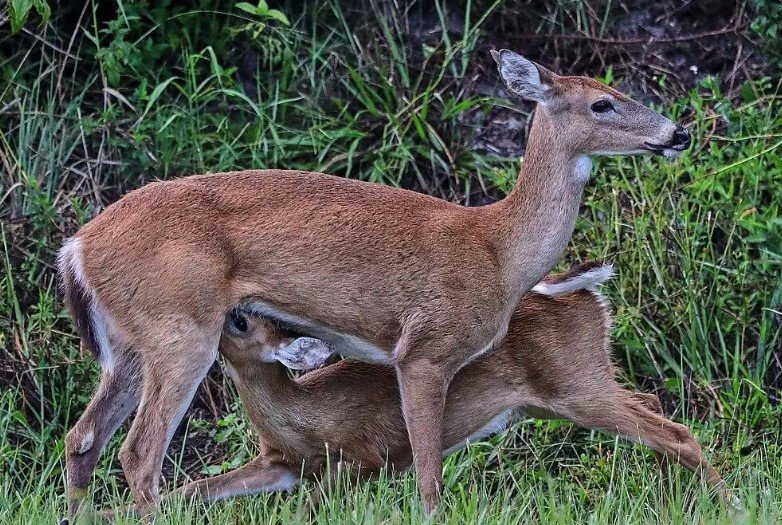A fatal neurological illness, chronic wasting disease (CWD), has been detected in Georgia for the first time, state wildlife officials confirmed on Thursday. The disease, which primarily affects deer, elk, and moose, was identified in a white-tailed deer from Lanier County.
The positive test result, confirmed by a U.S. Department of Agriculture lab, marks Georgia’s first encounter with the disease, which has been present in 35 other states and parts of Canada.
What Is Chronic Wasting Disease?
Chronic wasting disease is caused by prions, a type of misfolded protein that accumulates in the nervous system of infected animals. In healthy deer, prions are typically recycled or eliminated. However, in CWD-infected deer, these proteins become abnormal, leading to neurological damage.
Symptoms of CWD include:
- Weight loss
- Unsteady gait
- Decreased fear of humans
- Behavioral changes
- Eventual death
The Centers for Disease Control and Prevention (CDC) notes that CWD spreads through saliva, blood, urine, and feces of infected animals. While there are no confirmed human cases of the disease, hunters are advised to avoid consuming meat from deer that test positive or exhibit unusual behavior.

Georgia’s First Case
The infected deer, a 2½-year-old white-tailed buck, was harvested on private property in Lanier County, near Valdosta, during routine surveillance by the Georgia Department of Natural Resources (DNR). In response to the positive test, the DNR has implemented immediate measures to mitigate the disease’s spread.
A “CWD Management Area” has been established, covering a five-mile radius around the location where the deer was harvested. The designated area spans portions of Lanier and neighboring Berrien County.
Response and Next Steps
The DNR plans to conduct cluster sampling within the management area to determine the prevalence and spread of the disease. Officials aim to understand how far the disease has reached and whether additional cases are present in the deer population.
Walter Rabon, Commissioner of the Georgia Department of Natural Resources, emphasized the importance of these measures in containing the disease. However, wildlife experts are concerned about the potential long-term impact on Georgia’s deer population and hunting traditions.
Broader Context: The Spread of CWD
CWD was first detected in Colorado in the 1960s and has since been found in 35 states and three Canadian provinces. In the southeastern U.S., neighboring states such as Alabama, Florida, Tennessee, and North Carolina have already documented cases.
Although no evidence currently suggests that CWD poses a risk to humans, its presence in Georgia raises concerns about wildlife health and the state’s hunting industry. Testing deer before consumption remains a critical precaution, and hunters are urged to report any animals displaying unusual behavior.
Recommendations for Hunters and Wildlife Enthusiasts
To protect themselves and Georgia’s deer population, the CDC and DNR recommend the following precautions:
- Avoid handling or consuming deer that appear sick or exhibit odd behavior.
- Have any harvested deer tested for CWD before eating.
- Wear gloves and avoid contact with the brain or spinal tissue when processing deer.
- Do not eat meat from deer that test positive for CWD.
As Georgia navigates its first encounter with chronic wasting disease, wildlife officials remain focused on monitoring the situation and preventing further spread. The discovery underscores the need for vigilance among hunters and conservationists alike.
